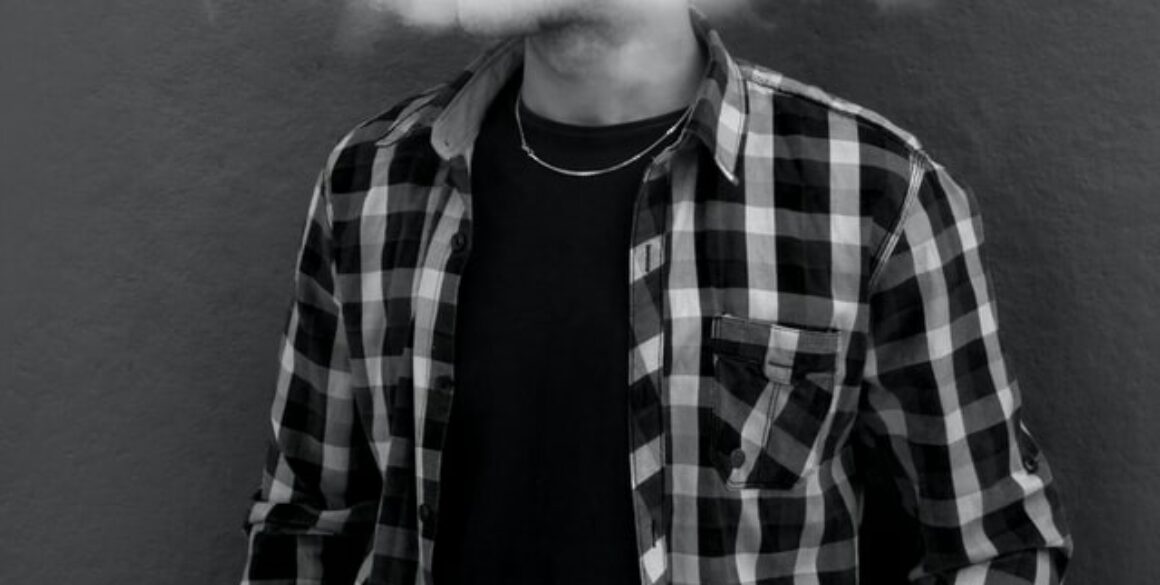Strong masculine norms interfere with the help-seeking of men with major depressive disorder
Today I want to publish my work from the academic skill course at the RUG Groningen. It’s part of my psychology study and belongs to my area of research.
Strong masculine norms interfere with the help-seeking of men with major depressive disorder
Major depressive disorder (MDD) is the single most common psychiatric disorder and is affecting more than a 350million people globally (World Health Organization, 2017), while depression rates in men are consistently found to be nearly half those of women (Seidler et al., 2016). Moreover, in western countries, around three-quarters of suicides in men show a link to MDD (Rodway et al., 2016; Roh et al., 2018). So far, there is not enough research to validate the correct clinical diagnosis in male depression since symptoms such as substance use and physical violence are often misleading (Martin et al., 2013).
Next to the correct diagnose, men have problems finding the right mental help. It turns out that seeking help is a complex topic and primarily not a single factor problem. Seidler et al. (2016) summarized their findings into six main topics: difficulty communicating, recognizing and understanding depression, the impact of masculinity on depression symptoms, the effect of masculinity on help-seeking, type of therapy and therapist preferred, masculinity and maladaptive coping styles.
One recurring topic is the traditional picture of masculine norms such as stoicism, self-reliance, and restrictive emotionality. Strong gender norms correlate with less help-seeking behavior and a rather negative attitude towards psychological treatments (Levant et al., 2011).
Many questions about MDD in men are raised. This review will have a closer look at different causes why men have difficulties seeking help; precisely, `Does strong masculine norms interfere with the help-seeking of men with major depressive disorder.`
The problem of men and mental support in western society
The problematic impact of conformity to traditional masculine norms is negatively linked to the help-seeking for depression in men.
Traditionally in the Western World, there is still a strong picture from dominant models of male socialization that leads men’s conformity to traditional masculine norms such as stoicism, self-reliance, and restrictive emotionality (Seidler et al., 2016). Controversially, this attitude makes the depression diagnosis in men seem to be at lower rates than in women. Seidler et al. (2016) investigated 37 eligible articles published between 1995 and 2015. Most participants have their residence in the USA and Canada. In total, 8146 participants with an average age of 33.15 years were included.
Another recent study by Herreen et al. (2021) could highlight a new trend in the Australian population (14,516 males, aged 15–55 years): “younger men report higher conformity to traditional masculine norms relative to older male peers.” This finding is also supported by the study of Rice et al. (2021), where they investigated over 1000 participants (average age: 23.64years). Young males stand under the pressure of gender norms and present as strong and competitive individuals who show no vulnerability.
A field study by Whitley and Zhou (2020) shows real experiences and opinions on members of the seduction communities (another term: Pick up community), where members often suffer from different mental problems, such as depression. This community is known for its controversial gender role and identification: ” The expansion of the seduction community and its growing appeal to young men is occurring within a rapidly shifting social world, especially regarding norms surrounding gender roles and gender relations.” (Whitley and Zhou, 2020)
It appears that the identification of men has a crucial influence on whether and how depressed individuals seek out help. For example, Seidler et al. (2016) summarized that men with a strong traditional masculine norm identification show a decrease in seeking therapeutic help.
Despite increasing rates of seeking help, men tend to attend relatively few sessions and develop a negative attitude after unsatisfactory experiences. The study of Seidler et al. (2020) found a correlation that “indicated that satisfaction with previous therapy had a significant negative association with doubt about the effectiveness of therapy.” Men who enter therapy with doubt, feelings of ambivalence, mistrust, overcome dominant masculine ideals and inner barriers are vulnerable to negative therapeutic experiences. Also, the study highlighted that with more significant doubt about the therapy outcome, participants became more reserved about telling distress to one’s physician.
“I bottled up my negative feelings, I had to work things out by myself, I tried to ignore feelings down” are the most given answers in the most recent study of Rice et al. (2021). It shows the tendency of male patients to sort things by themselves. A little bit over 50% used alcohol to cope with the situation, rather than trusting professionals or stopping a negative therapeutical experience.
Herreen et al. (2021) could find a decrease of identification with the traditional male norms in higher age and opening up to the helping progress. But the chances are high that male patients don’t follow the treatment when they receive the wrong help.
Overall the studies show a solid link to a negative cycle. Once a male patient finds the way to mental health but gets introduced to negative experiences, the patient becomes reserved and confirmed in his traditional masculine norms that the therapy is not working and has to help himself (Seidler et al. 2020). The researcher suggests that there should be a big focus on positive reinforcement. Positive therapeutic experiences might change the masculine attitude and result in long-lasting treatment. An improvement is needed in all clinical and therapeutic levels between the men, physician, and therapist.
Conclusion
Multiple sources could show essential insights about the relationship between conformity to masculine norms and depression. The professional education will target the increase of sensitivity for this topic in physicians, researchers, and therapists. Seidler et al. (2016) summarized their finding: “We call for researchers and clinicians to view masculinity as a constantly evolving social, historical and psychological phenomenon.”
Next to gender identification, there appears a strong relation to age, masculine norms, and depression (Herreen et al. 2021). It seems that strong traditional masculine norms dictate the behavior of young men and make it harder for those in need of help. Easten (2013) could show that an abused man needed, on average, 28years to open up and make use of in-depth help, mainly cursed by wrong role models and traditional norms.
There are still some limitations in the research about male depression within the included paper. Often, it is not clear if the participants are diagnosed on a clinical basis or self-diagnosed. It is also not clear how strong the men are experiencing clinically significant depression.
It would be interesting to compare the results with other ethnics and age groups for further research. Most studies relied on specific samples such as Caucasians, students, or general community members from high-income countries.
Another limitation is the research in general; many data are old and don’t reflect the current sociocultural circumstances that apply to younger generations: “rather than relying on existing measures which are largely reductionist, overly simplistic and likely outdated” (Seidler et al. 2016).
Future research should explore other distress mentioned to the Physician (Anxiety, substance abuse, etc.) to see if this phenomenon is only related to depression.
More consciousness and a clearer picture of the unique treatment needs are necessary. Poor mental health in men is a problematic social and economic topic since the suicide rate is highest at the most economically productive time (Möller-Leimkühler, 2002).
References Easton, S.D. (2013). Disclosure of child sexual abuse among adult male survivors. Clinical Social Work Journal 41 (4), 344–355, DOI: https://doi.org/10.1007/s10615-012-0420-3 Herreen, D., Rice, S., Currier, D., Schlichthorst, M. & Zajac, I. (2021). Associations between conformity to masculine norms and depression: age effects from a population study of Australian men. BMC psychology 9 (1), 1–10, DOI: 10.1186/s40359-021-00533-6 Levant, R. F., Wimer, D. J., & Williams, C. M. (2011). An evaluation of the Health Behavior Inventory-20 (HBI-20) and its relationships to masculinity and attitudes towards seeking psychological help among college men. Psychology of Men & Masculinity, 12(1), 26–41, DOI: 10.1037. Martin, L.A., Neighbors, H.W. & Griffith, D.M. (2013). The experience of symptoms of depression in men vs women: analysis of the National Comorbidity Survey Replication. JAMA psychiatry 70 (10), 1100–1106, DOI: 10.1001/jamapsychiatry.2013.1985 Möller-Leimkühler, A. M. (2002). Barriers to help-seeking by men: A review of sociocultural and clinical literaturewith particular reference to depression. Journal of Affective Disorders, 71(1-3), 1–9, DOI: 10.1016 Rice, S., Kealy, D., Seidler, Z., Walton, C., Oliffe, J.L., & Ogrodnickzuk, J. (2021). Male-type depression symptoms in young men with a history of childhood sexual abuse and current hazardous alcohol use. Psychiatry Research 304. DOI: https://doi.org/10.1016/j.psychres.2021.114110 Rodway, C., Tham, S.-G., Ibrahim, S., Turnbull, P., Windfuhr, K., Shaw, J., Kapur, N., & Appleby, L. (2016). Suicide in children and young people in England: a consecutive case series. Lancet Psychiatry 3 (8), 751–759, DOI:10.1016/S2215-0366(16)30094-3 Roh, B.-R., Jung, E.H., & Hong, H.J. (2018). A comparative study of suicide rates among 10–19-year-olds in 29 OECD countries. Psychiatry investigation 15 (4), 376, DOI: 10.30773/pi.2017.08.02 Seidler ZE., Dawes AJ., Rice SM., Oliffe JL., & Dhillon HM. (2016). The role of masculinity in men's help-seeking for depression: a systematic review. Clin Psychol Rev. 6(49),106–18, DOI: 10.1037/pro0000220 Seidler ZE., Rice SM., Kealy D., Oliffe JL., & Ogrodniczuk JS. (2020). Once bitten, twice shy: Dissatisfaction with previous therapy and its implication for future help-seeking among men. The International Journal of Psychiatry in Medicine, 55(4) 255–263, DOI: 10.1177/0091217420905182 Whitley R. & Zhou J. (2020). Clueless: An ethnographic study of young men who participate in the seduction community with a focus on their psychosocial well-being and mental health. PLOS ONE 15(2): e0229719, DOI: https://doi.org/10.1371/journal.pone.0229719 World Health Organization, (2017). Depression and Other Common Mental Disorders: Global Health Estimates. [cited 2017 Nov 12] https://apps.who.int/iris/handle/10665/254610



